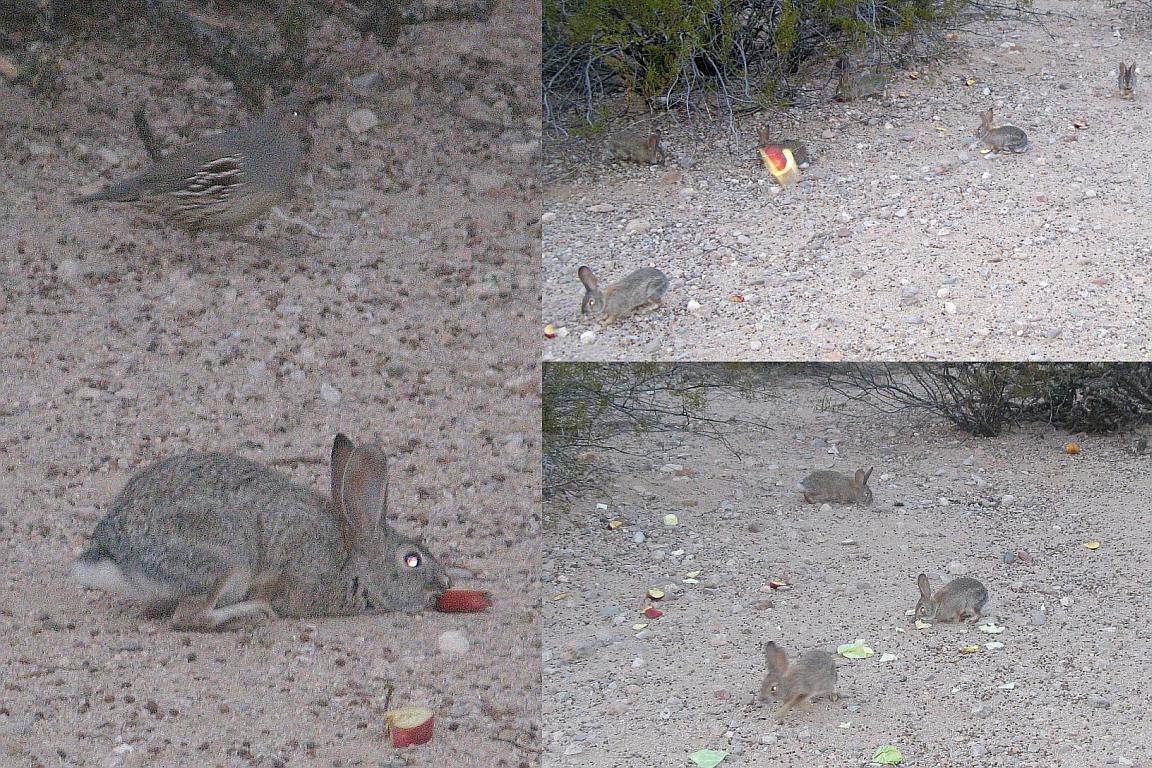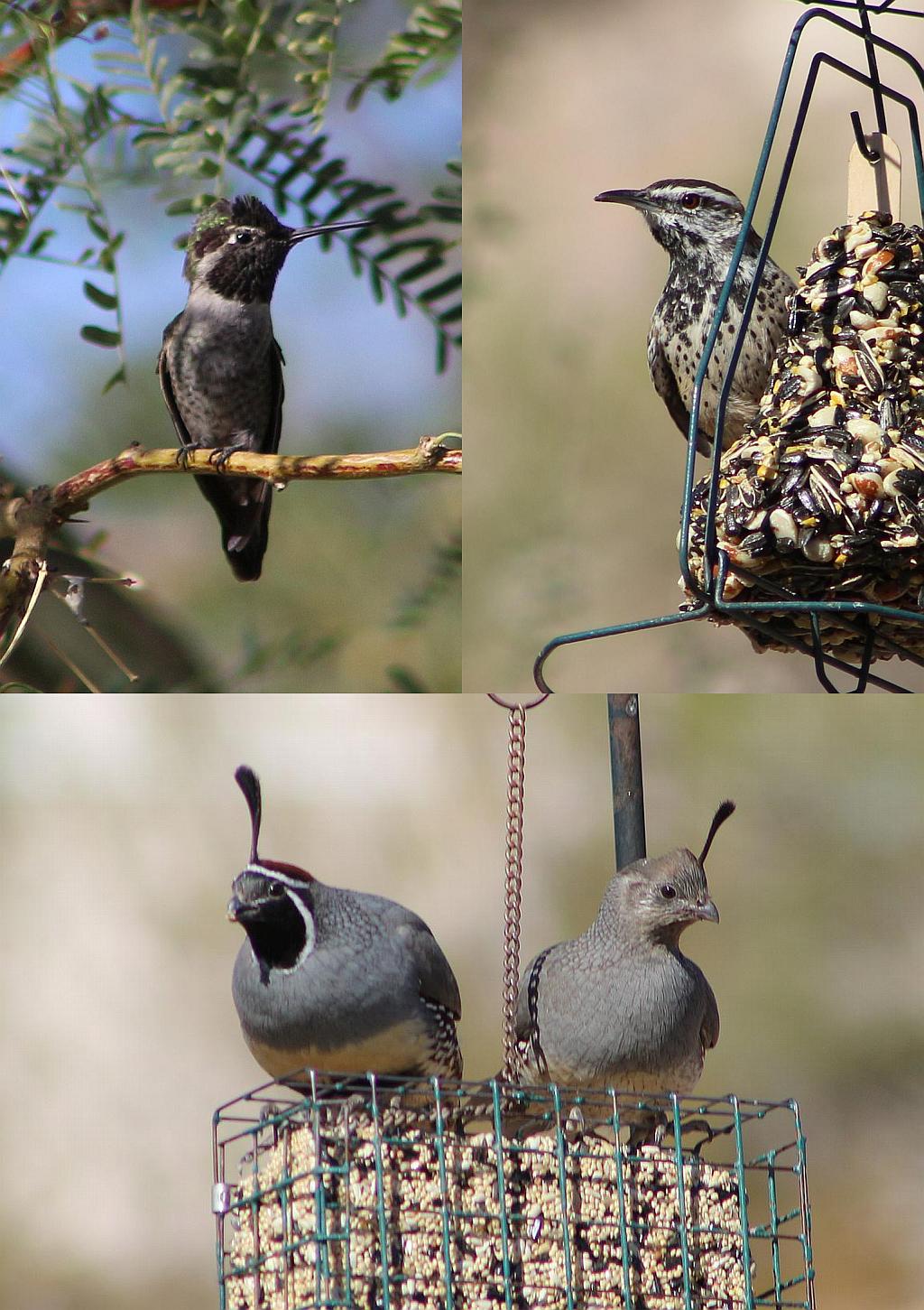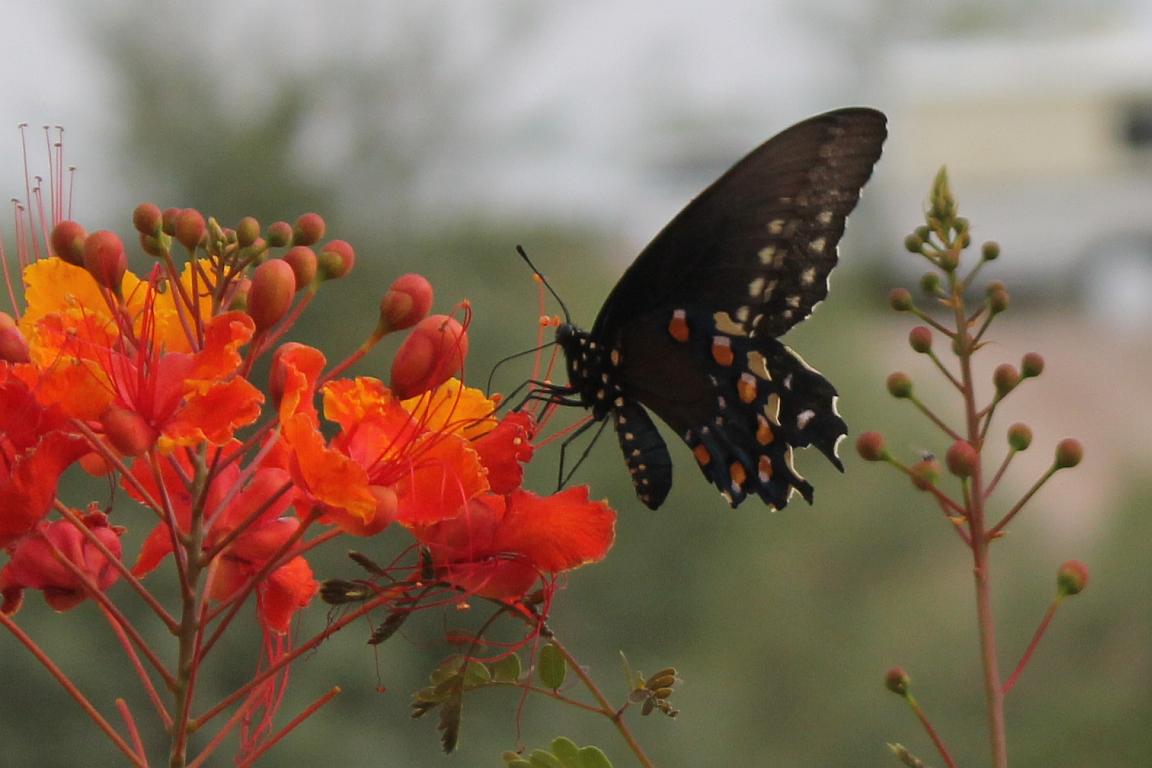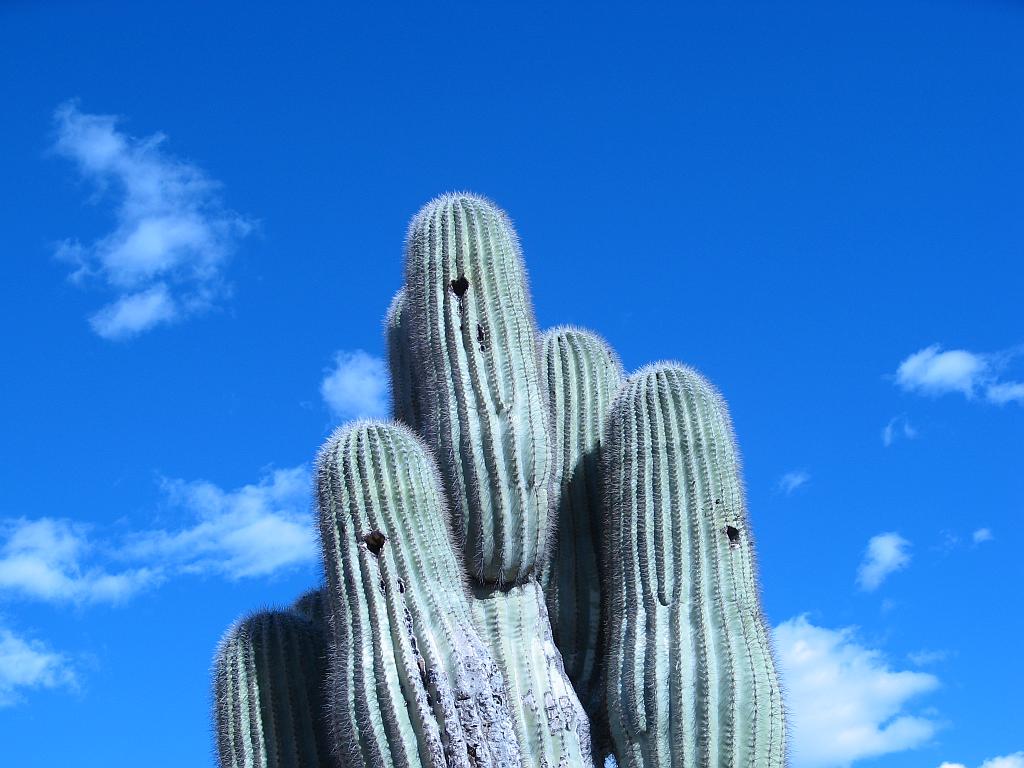At dusk every evening these days, we take a bunch of bread, veggies and fruit up to the retention wall in the back yard and toss the goodies out for the quail, rabbits and other creatures that inhabit our back yard. The rabbits come running when they see us and begin devouring the stuff. The Quail, being a bit more wary, will snap up bread pieces and run up the hill with them without getting too close to us humans. A few of the bunnies will come very close to us in order to get the goodies. However, when there is a sharp noise or other disturbance, they quickly retreat to shelter in the underbrush.
Click on the image to enlarge.







